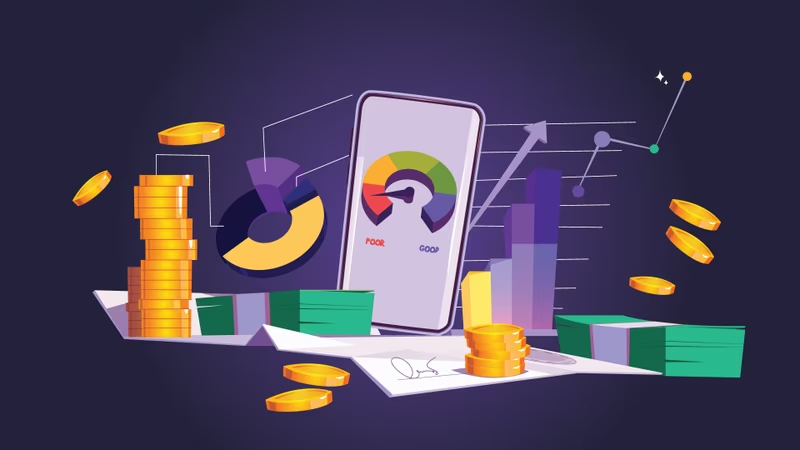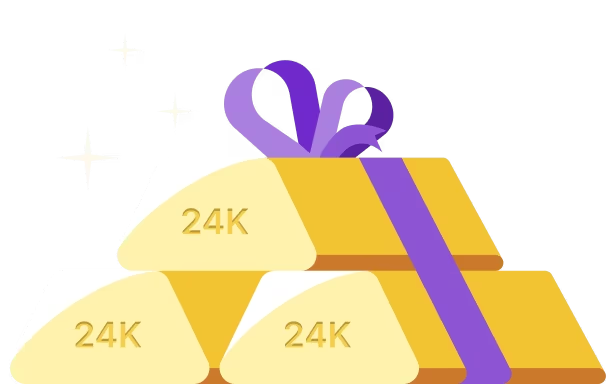Changes in how people get loans in India create a new group of customers who know about money and technology.
These customers choose fast online loans on their computers or phones instead of the old, slow way of getting loans.
Nowadays, people can quickly get credit using digital options like credit cards, small loans, and long-term loans. These are becoming very popular among the new generation of customers in India.
To get these loans, borrowers need to meet specific financial requirements. These requirements make it easy for them to use credit channels.
Additionally, there are also loans for low CIBIL scores available for people.
For individuals with a low CIBIL score or credit score, there are now options such as loans for low CIBIL scores and low CIBIL score personal loans available online.
These options cater to those seeking loans for low credit scores online and instant loans for low CIBIL scores, providing them access to credit despite their credit history.
In this article, we'll explain credit scores, how they work and guide you through fixing CIBIL errors.
What is a Credit score?
A credit score serves as a measure determining an individual's trustworthiness in repaying debts or loans based on their credit history and financial situation.
Credit scores, usually three digits, assess creditworthiness. FICO scores range from 300 to 850, affecting loan approval and rates.
The numerical assessment reflects a person's eligibility and reputation in the eyes of lenders, whether banks or non-banking financial corporations (NBFCs).
How does Credit Score works?
Traditional and modern lenders, including mortgage and credit card companies, take proactive steps to assess the borrower's credit score history.
This evaluation helps them decide the appropriate credit amount to offer and the interest rate to apply, tailored to the specific borrower.
In India, four credit bureaus are responsible for tracking and supplying credit scores to individuals and businesses.
These bureaus include TransUnion CIBIL (Credit Information Bureau of India Limited), Equifax, HighMark, and Experian.
For those with a low CIBIL score, options like loans for a low CIBIL score and low CIBIL score personal loans become relevant.
These solutions cater to those needing a low CIBIL loan or a personal loan with a bad CIBIL score, helping them secure a loan despite having a poor credit score.
Generally, a score below 670 is considered "bad." While having a low credit score might pose challenges in obtaining a traditional personal loan, it doesn't render it impossible.
Let's see how you can get a loan with a bad credit score.
How can you avail of a Personal Loan with a Bad Credit Score
If you need a personal loan with a bad cibil score, adhering to these steps could enhance your likelihood of approval:
1. Examine your credit score and credit reports
Before you proceed with a personal loan application, closely review both your credit report and credit score.
Federal regulations grant you the right to receive a free copy of your credit report annually from major credit-reporting bureaus, namely Equifax, Experian, and TransUnion.
Visit AnnualCreditReport.com to request your complimentary credit reports.
Obtain your credit report to know your score and find any issues. Ensure you fix inaccuracies or debts before applying for a personal loan.
2. Ensure your monthly payment aligns with your budget
For individuals with bad credit, it's crucial to avoid taking out a loan that could strain your finances.
This action could further harm your credit score. Assess loan payments and due dates. Use a loan calculator to plan. If payments are burdensome, you can try a secured credit card.
3. Compare loans tailored for bad credit from your local bank, credit union, or an online lender
Although having a low credit score might not make you eligible for the most advantageous rates and terms provided by various institutions and lenders, you could potentially obtain a better interest rate by working with your bank or credit union.
If the bank is familiar with your spending patterns and payment history, your low credit score might be balanced out by your consistent punctual payments and maintaining a stable account.
Likewise, Online lenders consider more than credit, making loans accessible despite bad credit.
4. Obtain prequalification
Prequalifying lets you estimate loan details like amount, rates, and terms from a lender without hurting your credit, which differs from a complete application and usually includes a soft credit check.
Lenders do hard credit checks during formal loan applications, which can briefly lower your credit score. Prequalification avoids this by assessing approval chances without a hard inquiry.
You can prequalify online in minutes and should consider rates from two lenders while also checking for fees that could impact your decision.
5. Explore secured loans
Secured loans use assets like homes or cars as backing, offering better rates. But if you can't pay, the lender can take your property to cover the debt.
If you have collateral to secure the loan and are confident in your ability to meet payments currently and in the future, a secured loan could be the optimal choice for someone with low credit seeking funding.
6. Consider a co-signer if needed
A co-signer is typically a creditworthy friend or family member who agrees to join the loan with you to enhance your approval chances or secure a lower rate. Not all lenders allow co-signers.
Remember, co-signers pay if you can't. This can strain relationships and harm credit if payments are missed. Plan with your co-signer and communicate well before agreeing.
7. Compile financial documents
Prepare these documents before applying for a loan: financial records, proof of income, credit history, and identification. This includes;
- Personal contact details, including Social Security number, full name, and address.
- Government-issued personal identification, like your driver's license.
- Specifics about the personal loan, such as the purpose, desired amount, and preferred term.
- W-2 forms for the past two years.
- Federal tax returns from the past two years.
- The two most recent bank statements for all your accounts.
- Recent pay stubs.
- Utility bills or mortgage statements to verify your address.
Note that your lender might ask for additional documents.
8. Sometimes, a hard credit check
When applying for a personal loan, remember that a hard credit check can temporarily lower your credit score.
Limit the number of applications to avoid seeming financially stretched.
Look into online lenders, banks, and credit unions for better options. Stick with reputable sources to avoid scams and predatory debt.
How can one correct a mistake in a Credit Report
Have you ever examined your CIBIL report and identified inaccuracies or incorrect information? Don't worry. You're not alone.
Sometimes errors can sneak into your credit report, and it's crucial to rectify them to maintain a healthy credit score.
We'll also introduce you to OneScore, a user-friendly app to help you conveniently monitor your credit score and report.
The following are steps you should follow:
Step 1: Access Your Credit Report
To fix the CIBIL error, use the OneScore app. Download, login, access your report, and review for errors.
Step 2: Identify the Inaccuracies
Check the credit reports for errors in personal details, credit history, accounts, and payments. Note inaccuracies found.
Step 3: Lodge a Dispute
Use OneScore's "Report an error" or CIBIL's "Raise a Dispute" section. Provide error details, personal info, and documents if needed. Explain the dispute and attach proof.
How to Lodge a Dispute:
- Upon clicking the "Report an error" option in OneScore, you'll be redirected to www.cibil.com.Login and access the "Dispute Resolution" section.
- Log in with your credentials. Navigate to the credit report, then access the dispute center. Click on "dispute an item" and follow the provided instructions. You can raise disputes on different accounts and data fields provided by banks or credit institutions, then hit the submit button.
- A dispute summary screen appears. Remember, you can review your details, contact information, employment details, and account information.
Step 4: Stay Informed About the Dispute
Once the dispute is filed, CIBIL will begin an inquiry. They'll contact the appropriate lender to confirm the correctness of the reported details.
Step 5: Review the Resolution
Once the investigation concludes, CIBIL will update your credit report accordingly. If the disputed information is incorrect, CIBIL will rectify the error and notify the concerned lender about the correction.
You'll either get a notification or see an updated credit report that shows the modifications.
Step 6: Continuously Monitor Your Credit Score
After resolving the dispute, it's imperative to continue monitoring your credit score regularly. OneScore offers a convenient option to track your credit score and receive alerts for any alterations.
You can ensure that the error has been rectified and your creditworthiness is accurately portrayed.
Conclusion
Remember, CIBIL report accuracy depends on bank data. If dispute resolution experiences delays, you can directly contact your bank or credit institution and request them to share accurate data with CIBIL.
Be patient, as it might take up to 30 days to resolve the disputes.










